Grace Elliot's Blog: 'Familiar Felines.' , page 31
May 8, 2011
Shorter by a Head - Some Guillotine Trivia!
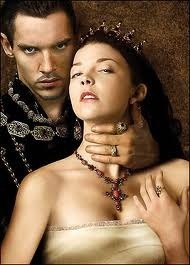 King Henry VIII and Anne Boleyn from 'The Tudors.'
King Henry VIII and Anne Boleyn from 'The Tudors.'For Mother's Day I was lucky enough to be receive The Tudors DVD box set (and I didn't even hint that hard!) So this morning you would have found me ironing along to Season Two…with tears streaming down my face. Anne Boleyn was executed. Say no more. An extremely moving episode, which is perhaps why, when it came time to write my blog post, my mind turned to thoughts of beheading… and the guillotine.
Where was the guillotine invented?
a) 18th century Revolutionary Franceb) Medieval Halifax in Yorkshire, England.c) Medieval Scotland.
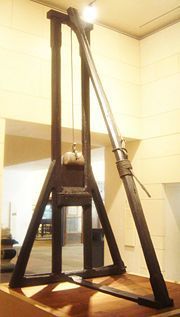 'The Maiden' - medieval decapitation in Scotland.
'The Maiden' - medieval decapitation in Scotland.The correct answer (although all options have some merit- read on) is B) – Halifax.
The Halifax Gibbet.
Records show that between 1286 and 1650, at least 53 people were executed in Yorkshire using 'The Halifax Gibbet.' This device consisted of two 15 foot upright poles, with a weighted cross beam on which an axe was mounted. The wealth of medieval Halifax came from textiles. As part of the manufacturing process valuable cloth was left drying on outdoor frames and a suitably fearsome deterrent was needed to change the mind of would-be thieves.A similar device called 'The Maiden' was developed around the same time in medieval Scotland.
 Doctor Guillotin - his humane intention backfired badly.
Doctor Guillotin - his humane intention backfired badly. Poor Dc Guillotin.Synonymous with 18th century Revolutionary France, the guillotine as we recognize it with a diagonal blade was actually designed in 1792 by Dc Antoine Louis. He picked up the initial idea from Dc Guillotin, and modified it. Dc Louis' device was called 'Louisette' but for some reason, despite protests from Dc Guillotin's family, the name 'Guillotine' stuck. Poor Dc Guillotin! His intention was never to create a machine for mass murder, but to develop a humane way of execution. His aim was to make a "Truly democratic device," that cleanly beheaded. Prior to this, if you were condemned to death, your suffering was largely determined by your wealth. The rich could afford a swordsman, to painlessly smite your head from your shoulders, whilst the poor suffered at the hands of an inept axe man or a prolonged death by hanging. Guillotin's initial design (modified by Louis) meant a guaranteed clean death regardless of rank.
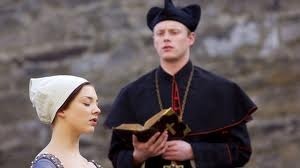 Anne Boleyn (from 'The Tudors') about to be executed.
Anne Boleyn (from 'The Tudors') about to be executed.Historical Urban Myth.Finally, contrary to popular myth, Dc Guillotin did not die by the device he helped conceive. Instead he died in 1814 due to septicaemia from an infected carbuncle on his shoulder.
On a lighter note, what is your favourite 'ironing' programme, and does it make you cry?
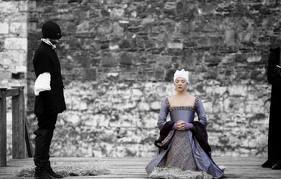 The last moments of Anne Boleyn.
The last moments of Anne Boleyn. [With thanks to makers of 'The Tudors' for the images.]
Published on May 08, 2011 11:41
May 4, 2011
Sir Walter Raleigh - Famous for Doing Things he Didn't.
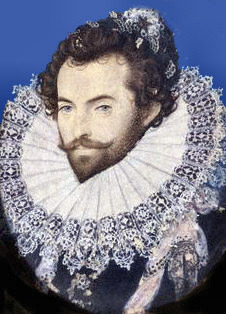 Sir Walter Raleigh - Elizabethan adventurer and explorer.
Sir Walter Raleigh - Elizabethan adventurer and explorer.It's funny how times change. My youngest son tells me at school they no longer study 'history', but something called 'Opening Minds'. I suppose this is fair enough, after all nothing stays the same, especially what we assume are facts! Take Sir Walter Raleigh as an example. What most school children can tell you about this famous Elizabethan adventurer is that; - Raleigh put his cloak over a puddle to let Queen Elizabeth I pass. - He brought potatoes back as a gift for Elizabeth. - And he introduced tobacco to England.
Wrong! Wrong! Wrong! On all counts wrong!
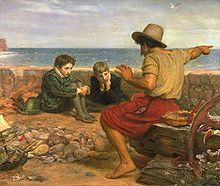 Millais' famous painting - 'The Boyhood of Raleigh.'
Millais' famous painting - 'The Boyhood of Raleigh.' Elizabethan Chivalry.
It's a fantastic image, the chivalrous Sir Walter spreading his cloak beneath Elizabeth's feet – but it never happened. This myth arose from Walter Scott's romantic novel 'Kenilworth' written in 1821, over 200 years after Raleigh's death. The scene struck the public imagination and it quickly became the Victorian equivalent of an 'urban myth', whereas in reality there was no basis in fact.
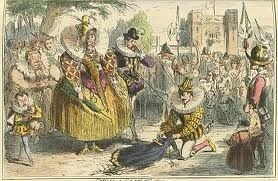 A Chip off the Old Block.
A Chip off the Old Block.Popular history has it that Raleigh brought the first potatoes to England, after his voyages of exploration to the Americas. However, more likely is the potato came from Spain and was already widespread in Europe around the time of Raleigh's birth. Happily Raleigh does indeed have a link to potatoes. He grew the vegetable in the garden of his manor in Ireland, to the displeasure of his neighbours who threatened to burn his house down. Potatoes are a member of the Nightshade family, and thought to be poisonous, and the villagers were suspicious of his motives….
Up in Smoke.
Again, Raleigh is widely attributed with introducing and popularizing smoking in Elizabethan England. Not so! Legend has it that one of his servants, thinking his master was on fire, doused Raleigh's pipe with water. Although Raleigh was a smoker he didn't discover tobacco. That plaudit falls to a Frenchman, Jean Nicot. (It is from Nicot's surname that the word 'nicotine' derives.) The first recorded mention of smoking was in 1556 (Raleigh was four years old) when a Bristol sailor was seen;'Emitting smoke from his nostrils.'
So there we have it. Perhaps that's what the teachers mean by 'Opening Minds' instead of 'history' – studying facts instead of fables. (Although I doubt it somehow…)
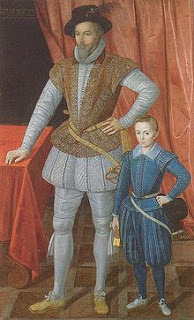 Sir Walter Raleigh and his son.
Sir Walter Raleigh and his son.
Published on May 04, 2011 05:47
May 3, 2011
Sue Perkins and her latest book 'BLITZ.'
Today it's my pleasure to welcome Sue Perkins to the blog. Sue has published books in diverse genres from fantasy to YA and romance. Although Sue now lives in New Zealand, she originates from Devon and it is her parents experiences in Plymouth during World War II that inspired her latest book. So without further ado....over to you Sue.
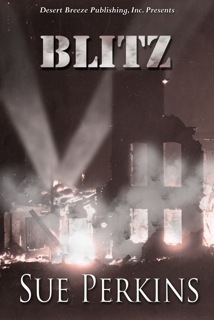
SUESeventy years ago in March 1941 and April 1941 the city of Plymouth, Devon was intensively bombed for two or three days at a time. The period went down in history as the Blitz. This year the people of Plymouth have been remembering the Blitz with exhibitions and memorial services for those who died in these horrific raids. My novel "Blitz" is set immediately prior to the outbreak of World War II and during the troubled years of fighting.
Velma and Jack fall in love and plan a future together. Her sisters try to force Velma to take things slowly. For the first time in her life Velma shows she will not be bossed around any more. She is determined to show her family she is an adult.
Jack's life in the Royal Army Service Corps often separates the young couple. The absence of her love makes Velma to question Jack's commitment to her. Both of them are concerned by the dark clouds of war gathering on the horizon. Will the turmoil break them apart for ever?
My original inspiration for this novel came from my parents real life romance. My mother lived through the blitz of Plymouth and, although she didn't talk much about the war, she did mention some of the hazards she endured.
Dad went overseas like most of the fit young men of that era. He visited many countries and experienced several different cultures. His travels took him to the battles in Europe, Africa and the Far East. Both parents experiences are woven into my novel, but the majority is fictional.
I have written many romance novels, but this is the first historical story. Inspired by my parents lives during the war, I wrote the first draft as the events came to mind. I stuttered to a halt at various times when dates and details needed to be checked. I had grown up in Plymouth so most of the history was familiar. The internet is a good tool for research and my sister, who still lives in Plymouth, also became a source of information.
The amazing aspect of the research came from looking into things I thought of as part of my life. I could envisage the ball and the prows of four ships on the top of the War Memorial on Plymouth Hoe, but I had no idea they represented the four winds. The roads and green spaces have also changed with the years. Again I had to research to find out how Plymouth looked in the 1930s and 1940s.
The British monarchs visited Plymouth during the war. The Queen during World War II later became known as the Queen Mother. To introduce the visit I had to research the station they arrived at, when they came, how long they stayed. Speech patterns also differed from the words used now. The word "Okay" did not come into common use in England until after the war. I believe the American GIs used it and the English copied the word.
I have to admit research is not my favorite pastime. Funnily enough I enjoyed looking into the history of Plymouth. Mainly because I could relate to the details I uncovered.
Thank you so much for hosting this part of my blog tour and I hope your readers enjoy learning about World War II in Plymouth.
http://www.sueperkinsauthor.comhttp://sueperkinsauthor.blogspot.com
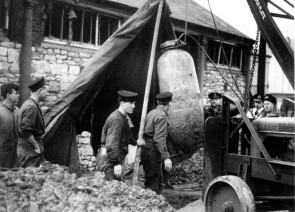 Bomb disposal in wartime Plymouth.
Bomb disposal in wartime Plymouth.
EXCERPT - "Can I help you?" Velma didn't glance at the customer on the other side of the counter. She concentrated on putting the last of the screws into their respective boxes."I hope so." Startled by the unexpected, Velma looked up into Jack's smiling face. "What are you doing here?" she hissed. "You'll get me into trouble." "Sorry. I had to see you." Jack didn't seem at all sorry. How could he when he had a wide grin on his face? "Can't it wait until lunchtime?" The happy expression disappeared to be replaced by a worried frown. Fright rushed through Velma. What had happened to make him so unhappy? "Can you grab a few moments? I have to speak to you." Velma glanced around to find her supervisor. To her dismay the woman stood glaring at her from the end of the counter. The store discouraged talking to friends during working hours and Mrs. Harris followed the rules to the letter. Velma's mind desperately sought for an excuse to exchange a few words with Jack. Nothing came immediately to mind. Jack must have seen her glance towards the supervisor. Velma watched in horror as he approached the woman. He spoke a few words to Mrs. Harris who turned to beckon to Velma."This young man is apparently related to your sister, Miss Field." The woman looked disbelievingly at Velma."Yes, Mrs. Harris. Mr. Stanley is my sister Florence's brother-in-law.""Apparently he has an urgent message from your sister so you may take a few moments to speak to him. I shall expect you to deduct this time from your lunch hour.""Thank you, Mrs. Harris."Velma ducked through the counter opening and walked to the stock lift entrance where she and Jack could talk privately."What on earth did you say to her? There usually has to be a death in the family before she'll let any of us out from behind the counter.""I said Florence is unwell and could you please visit her on your way home as she needs you to take care of Sam for a few hours.""Is she really sick?" For a moment Velma forgot about Jack's sudden appearance as a flutter of anxiety surfaced regarding Florence."No, she's fine. She knows about this excuse so she'll play along." "Why do you need to see me so urgently you can't wait until lunchtime?" "I'm sorry, Velma. I received a telegram this morning. I have to report back by this evening." His hands twitched and for a moment Velma thought he would pull her to him. He didn't but his eyes showed the depth of his misery. "I'm on my way to the station now. I couldn't leave without saying goodbye."Darkness flooded over Velma and she thought she would faint. They should have had another evening together before he had to go. Now, their last night had been snatched away from them. Desperately she tried to look and sound brave. She didn't want Jack to worry about her as he made his way back to camp."You will write won't you?" he pleaded. "I'll be waiting for your letters telling me all you're doing. I'm going to write to my mother to tell her all about you and we'll arrange when I can get away to coincide with your days off.""Yes Jack, I'll write to you, but you have to promise to reply. I'm not going to send letters into a bottomless pit." She glanced over at Mrs Harris who pointed at her watch. "I have to go. Take care and have a safe journey."It broke her heart to leave him without a kiss of farewell. She couldn't embrace him with her supervisor watching. She had to let her eyes tell him how much she loved him."Everything all right, Miss Field?" Mrs. Harris asked as Velma squeezed behind the counter. A glance to the lift bay told her Jack had already left."Yes, thank you, Mrs. Harris. Mr. Stanley wanted to make sure I visit Florence on my way home. Apparently, she's not well and needs help with my nephew."She knew by the expression on the older woman's face Mrs. Harris had been waiting to see if her story and Jack's matched up. What little satisfaction she gained from this soon dissipated as she thought of the days ahead without Jack by her side.



SUESeventy years ago in March 1941 and April 1941 the city of Plymouth, Devon was intensively bombed for two or three days at a time. The period went down in history as the Blitz. This year the people of Plymouth have been remembering the Blitz with exhibitions and memorial services for those who died in these horrific raids. My novel "Blitz" is set immediately prior to the outbreak of World War II and during the troubled years of fighting.
Velma and Jack fall in love and plan a future together. Her sisters try to force Velma to take things slowly. For the first time in her life Velma shows she will not be bossed around any more. She is determined to show her family she is an adult.
Jack's life in the Royal Army Service Corps often separates the young couple. The absence of her love makes Velma to question Jack's commitment to her. Both of them are concerned by the dark clouds of war gathering on the horizon. Will the turmoil break them apart for ever?
My original inspiration for this novel came from my parents real life romance. My mother lived through the blitz of Plymouth and, although she didn't talk much about the war, she did mention some of the hazards she endured.
Dad went overseas like most of the fit young men of that era. He visited many countries and experienced several different cultures. His travels took him to the battles in Europe, Africa and the Far East. Both parents experiences are woven into my novel, but the majority is fictional.
I have written many romance novels, but this is the first historical story. Inspired by my parents lives during the war, I wrote the first draft as the events came to mind. I stuttered to a halt at various times when dates and details needed to be checked. I had grown up in Plymouth so most of the history was familiar. The internet is a good tool for research and my sister, who still lives in Plymouth, also became a source of information.
The amazing aspect of the research came from looking into things I thought of as part of my life. I could envisage the ball and the prows of four ships on the top of the War Memorial on Plymouth Hoe, but I had no idea they represented the four winds. The roads and green spaces have also changed with the years. Again I had to research to find out how Plymouth looked in the 1930s and 1940s.
The British monarchs visited Plymouth during the war. The Queen during World War II later became known as the Queen Mother. To introduce the visit I had to research the station they arrived at, when they came, how long they stayed. Speech patterns also differed from the words used now. The word "Okay" did not come into common use in England until after the war. I believe the American GIs used it and the English copied the word.
I have to admit research is not my favorite pastime. Funnily enough I enjoyed looking into the history of Plymouth. Mainly because I could relate to the details I uncovered.
Thank you so much for hosting this part of my blog tour and I hope your readers enjoy learning about World War II in Plymouth.
http://www.sueperkinsauthor.comhttp://sueperkinsauthor.blogspot.com
 Bomb disposal in wartime Plymouth.
Bomb disposal in wartime Plymouth.EXCERPT - "Can I help you?" Velma didn't glance at the customer on the other side of the counter. She concentrated on putting the last of the screws into their respective boxes."I hope so." Startled by the unexpected, Velma looked up into Jack's smiling face. "What are you doing here?" she hissed. "You'll get me into trouble." "Sorry. I had to see you." Jack didn't seem at all sorry. How could he when he had a wide grin on his face? "Can't it wait until lunchtime?" The happy expression disappeared to be replaced by a worried frown. Fright rushed through Velma. What had happened to make him so unhappy? "Can you grab a few moments? I have to speak to you." Velma glanced around to find her supervisor. To her dismay the woman stood glaring at her from the end of the counter. The store discouraged talking to friends during working hours and Mrs. Harris followed the rules to the letter. Velma's mind desperately sought for an excuse to exchange a few words with Jack. Nothing came immediately to mind. Jack must have seen her glance towards the supervisor. Velma watched in horror as he approached the woman. He spoke a few words to Mrs. Harris who turned to beckon to Velma."This young man is apparently related to your sister, Miss Field." The woman looked disbelievingly at Velma."Yes, Mrs. Harris. Mr. Stanley is my sister Florence's brother-in-law.""Apparently he has an urgent message from your sister so you may take a few moments to speak to him. I shall expect you to deduct this time from your lunch hour.""Thank you, Mrs. Harris."Velma ducked through the counter opening and walked to the stock lift entrance where she and Jack could talk privately."What on earth did you say to her? There usually has to be a death in the family before she'll let any of us out from behind the counter.""I said Florence is unwell and could you please visit her on your way home as she needs you to take care of Sam for a few hours.""Is she really sick?" For a moment Velma forgot about Jack's sudden appearance as a flutter of anxiety surfaced regarding Florence."No, she's fine. She knows about this excuse so she'll play along." "Why do you need to see me so urgently you can't wait until lunchtime?" "I'm sorry, Velma. I received a telegram this morning. I have to report back by this evening." His hands twitched and for a moment Velma thought he would pull her to him. He didn't but his eyes showed the depth of his misery. "I'm on my way to the station now. I couldn't leave without saying goodbye."Darkness flooded over Velma and she thought she would faint. They should have had another evening together before he had to go. Now, their last night had been snatched away from them. Desperately she tried to look and sound brave. She didn't want Jack to worry about her as he made his way back to camp."You will write won't you?" he pleaded. "I'll be waiting for your letters telling me all you're doing. I'm going to write to my mother to tell her all about you and we'll arrange when I can get away to coincide with your days off.""Yes Jack, I'll write to you, but you have to promise to reply. I'm not going to send letters into a bottomless pit." She glanced over at Mrs Harris who pointed at her watch. "I have to go. Take care and have a safe journey."It broke her heart to leave him without a kiss of farewell. She couldn't embrace him with her supervisor watching. She had to let her eyes tell him how much she loved him."Everything all right, Miss Field?" Mrs. Harris asked as Velma squeezed behind the counter. A glance to the lift bay told her Jack had already left."Yes, thank you, Mrs. Harris. Mr. Stanley wanted to make sure I visit Florence on my way home. Apparently, she's not well and needs help with my nephew."She knew by the expression on the older woman's face Mrs. Harris had been waiting to see if her story and Jack's matched up. What little satisfaction she gained from this soon dissipated as she thought of the days ahead without Jack by her side.

Published on May 03, 2011 00:05
May 1, 2011
How Many Wives Did Henry VIII Have?
My current guilty pleasure is watching The Tudors on DVD (a mother's day present from my boys – clever chaps.) All of which set me thinking: How well do you know your Tudor history? So here's a simple question:How Many Wives did Henry VIII have?a) 6b) 5c) 4d) 2
Now those of you with an English education will be counting on your fingers: Divorced, Beheaded, Died, Divorced, Beheaded, Survived. So would it surprise you to learn the correct answer is d)? TWO wives.
History has it that Henry VIII had six queens (In order)- Catherine of Aragon- Anne Boleyn- Jane Seymour- Anne of Cleves- Catherine Howard.- Catherine Parr.
 A young Catherine of Aragon.Catherine of Aragon. Henry VIII himself annulled this marriage in his capacity of the head of the Church of England. Annulment is very different from divorce, in that it means a marriage never took place. Prior to Henry taking control of the church, there were two grounds for annulment – none consummation or pre-contract. Henry argued that since Catherine had previously been married to his deceased brother, Arthur, it was "God's Law" that the marriage did not stand, regardless of what the Pope thought, and declared they had never been married.
A young Catherine of Aragon.Catherine of Aragon. Henry VIII himself annulled this marriage in his capacity of the head of the Church of England. Annulment is very different from divorce, in that it means a marriage never took place. Prior to Henry taking control of the church, there were two grounds for annulment – none consummation or pre-contract. Henry argued that since Catherine had previously been married to his deceased brother, Arthur, it was "God's Law" that the marriage did not stand, regardless of what the Pope thought, and declared they had never been married. 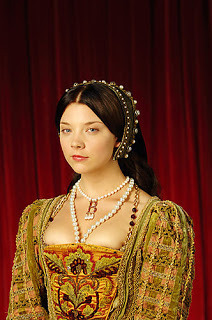 Natalie Dormer as 'Anne Boleyn' (apologies to the purists out there.....)
Natalie Dormer as 'Anne Boleyn' (apologies to the purists out there.....) Anne Boleyn.This time it was the Pope who declared the marriage invalid, since in the eyes of the Catholic Church, King Henry was still married to Catherine of Aragon. Ironically, shortly before Anne's execution, Henry annulled the marriage himself, which begs the question: - If they weren't married, how could her supposed 'infidelity' amount to treason?
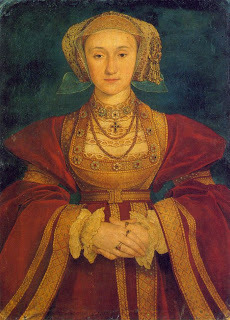 The famous Holbein portrait of 'Anne of Cleves.'
The famous Holbein portrait of 'Anne of Cleves.'Anne of Cleves.Both reasons for annulment, none consummation and pre-contract, came into play here. Henry found Anne's physical appearance so repulsive that he wasn't able to consummate the marriage…and… Anne was contracted to marry Francis, Duke of Lorraine, until Henry's advisors singled her out. In the long run Anne did rather well from her none-marriage, since Henry, glad to be easily rid of yet another 'wife' showered her with gifts and gave her the honoury title of 'Beloved sister."
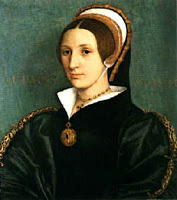 Catherine Howard.
Catherine Howard.Catherine Howard.It seems likely Catherine Howard was unfaithful before and during the marriage to Henry. When he found out, once again he used his power to declare the marriage invalid and had Catherine executed. Another none- marriage!
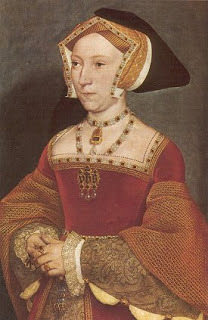 Jane Seymour.
Jane Seymour.And Finally.The TWO incontrovertible marriages were to Jane Seymour (who died from puerperal fever after giving birth to Edward) and Catherine Parr (who out lived Henry, remarried, and then died in childbirth.)
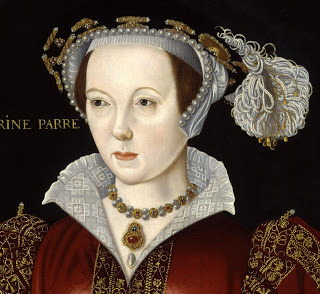 Catherine Parr.
Catherine Parr.Does it bother you, that programmes such as 'The Tudors' take liberties with historical accuracy? Does it matter that the lead actor, Johnathan Rhys Meyers, doesn't have Henry's famous red hair...or is it a more important to popularise history and bring it to life?Leave your comments below.
Published on May 01, 2011 09:18
How Many Wives had Henry VIII?
My current guilty pleasure is watching The Tudors on DVD (a mother's day present from my boys – clever chaps.) All of which set me thinking: How well do you know your Tudor history? So here's a simple question:How Many Wives did Henry VIII have?a) 6b) 5c) 4d) 2
Now those of you with an English education will be counting on your fingers: Divorced, Beheaded, Died, Divorced, Beheaded, Survived. So would it surprise you to learn the correct answer is d)? TWO wives.
History has it that Henry VIII had six queens (In order)- Catherine of Aragon- Anne Boleyn- Jane Seymour- Anne of Cleves- Catherine Howard.- Catherine Parr.
 A young Catherine of Aragon.Catherine of Aragon. Henry VIII himself annulled this marriage in his capacity of the head of the Church of England. Annulment is very different from divorce, in that it means a marriage never took place. Prior to Henry taking control of the church, there were two grounds for annulment – none consummation or pre-contract. Henry argued that since Catherine had previously been married to his deceased brother, Arthur, it was "God's Law" that the marriage did not stand, regardless of what the Pope thought, and declared they had never been married.
A young Catherine of Aragon.Catherine of Aragon. Henry VIII himself annulled this marriage in his capacity of the head of the Church of England. Annulment is very different from divorce, in that it means a marriage never took place. Prior to Henry taking control of the church, there were two grounds for annulment – none consummation or pre-contract. Henry argued that since Catherine had previously been married to his deceased brother, Arthur, it was "God's Law" that the marriage did not stand, regardless of what the Pope thought, and declared they had never been married.  Natalie Dormer as 'Anne Boleyn' (apologies to the purists out there.....)
Natalie Dormer as 'Anne Boleyn' (apologies to the purists out there.....) Anne Boleyn.This time it was the Pope who declared the marriage invalid, since in the eyes of the Catholic Church, King Henry was still married to Catherine of Aragon. Ironically, shortly before Anne's execution, Henry annulled the marriage himself, which begs the question: - If they weren't married, how could her supposed 'infidelity' amount to treason?
 The famous Holbein portrait of 'Anne of Cleves.'
The famous Holbein portrait of 'Anne of Cleves.'Anne of Cleves.Both reasons for annulment, none consummation and pre-contract, came into play here. Henry found Anne's physical appearance so repulsive that he wasn't able to consummate the marriage…and… Anne was contracted to marry Francis, Duke of Lorraine, until Henry's advisors singled her out. In the long run Anne did rather well from her none-marriage, since Henry, glad to be easily rid of yet another 'wife' showered her with gifts and gave her the honoury title of 'Beloved sister."
 Catherine Howard.
Catherine Howard.Catherine Howard.It seems likely Catherine Howard was unfaithful before and during the marriage to Henry. When he found out, once again he used his power to declare the marriage invalid and had Catherine executed. Another none- marriage!
 Jane Seymour.
Jane Seymour.And Finally.The TWO incontrovertible marriages were to Jane Seymour (who died from puerperal fever after giving birth to Edward) and Catherine Parr (who out lived Henry, remarried, and then died in childbirth.)
 Catherine Parr.
Catherine Parr.Does it bother you, that programmes such as 'The Tudors' take liberties with historical accuracy? Does it matter that the lead actor, Johnathan Rhys Meyers, doesn't have Henry's famous red hair...or is it a more important to popularise history and bring it to life?Leave your comments below.
Published on May 01, 2011 09:18
April 30, 2011
Frugal eReader features 'A Dead Man's Debt.'
http://thefrugalereader.com/2011/04/30/the-frugal-find-of-the-day-a-dead-mans-debt-grace-elliot-2-99/
The Frugal eReader features - A Dead Man's Debt!
Pop over to learn more about a bargain read that you will just lurvvv!



The Frugal eReader features - A Dead Man's Debt!
Pop over to learn more about a bargain read that you will just lurvvv!


Published on April 30, 2011 08:25
April 27, 2011
Marital Miscellany - some Historical Trivia to do with Marriage.
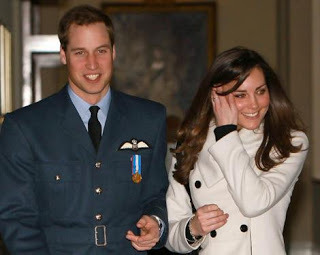 .
. With the wedding of Prince William and Katherine Middleton taking place this Friday, let's take a look at historical trivia associated with marriage.
Bride Price.
In Anglo-Saxon times a man with many daughters was considered rich. He had plentiful helpers to do the cooking, cleaning, to raise crops and tend livestock…so if a daughter was lost to him through marriage, he needed compensation. Price was decided by rank and experience:A virgin was valued at twice as much as a widow, and there were four grades of widow:
worth 6 shillings (30 pence) 12 shillings (60 pence) 20 shillings (1 GBP) and 50 shillings (GBP 2.50)
Since virgins were so highly rated, there were some unscrupulous fathers, with an eye for a profit, who would sell the same daughter several times over. However there was protection in the law if a husband found his wife was not in the condition the vendor had promised – he could ask for his money back!
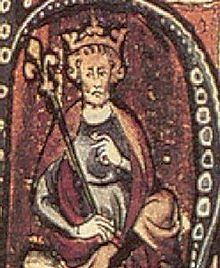 King Cnut.Fortunately, when King Cnut (1016 – 35) took the English throne, he enacted a law that no woman could be compelled to marry against her will and that any monies changing hands were considered a gift and could not be refunded.
King Cnut.Fortunately, when King Cnut (1016 – 35) took the English throne, he enacted a law that no woman could be compelled to marry against her will and that any monies changing hands were considered a gift and could not be refunded. Marital Superstitions.
In old England there were a number superstitions associated with marriage.It was a good omen if on the way to the church the bride met a toad, spider or wolf. However it was bad luck to meet a priest, monk, lizard, snake, dog or cat!
In East Anglia the marriage of a woman to a man whose surname began with the same letter as hers, was predicted to be unhappy. A saying ran;
"To change the name and not the letter, It is change for the worse and not change for the better."
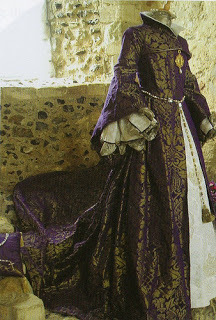 A replica of Mary Tudor's wedding dress.In the Scottish Highlands, to bless a marriage with happiness the best man was supposed to remove the left shoe of the groom at the door of the church and make the sign of the cross on the right side of the door. To this day it is the left shoe that is supposed to be tied to the back of the wedding car as it departs. Also, if a younger sister married before her elder siblings, her sisters should dance barefoot at the wedding or they would never be married.
A replica of Mary Tudor's wedding dress.In the Scottish Highlands, to bless a marriage with happiness the best man was supposed to remove the left shoe of the groom at the door of the church and make the sign of the cross on the right side of the door. To this day it is the left shoe that is supposed to be tied to the back of the wedding car as it departs. Also, if a younger sister married before her elder siblings, her sisters should dance barefoot at the wedding or they would never be married. And finally, in northern England it was traditional young men attending the wedding, to pluck the garter from the bride's leg as soon as the ceremony was over. To this end the bride would often was a special, ceremonial garter or ribbon, worn on the lower leg to facilitate its removal and spare her blushes from unwarranted private fumbling.
So I hope Kate Middleton sees a toad and not a monk on the way to the Cathedral and I wish the couple every future happiness. I can't wait to see what the dress looks like…rumour has it she's wearing ivory….Now the colour of a bridal gown, that's a whole new post…..
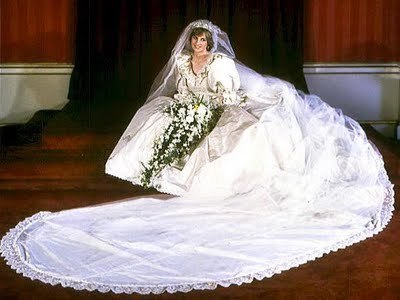 Princess Diana's wedding dress.
Princess Diana's wedding dress.
Published on April 27, 2011 08:17
April 24, 2011
Bayeux Tapestry - a Stitch in Time.
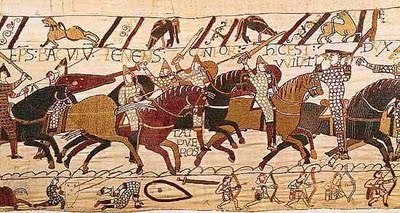
In 1066 the Normans invaded England and defeated the English King Harold at the Battle of Hastings. [Actually the battle took place 6 miles away at Santlache or Sandy Stream. The winning French punned the name to Sanguelac or Blood Lake… but that's another story.] King Harold was killed, supposedly with an arrow to his eye, and William the Conqueror seized power….the rest, as they say, is history.
These historic events were commerated in the Bayeux Tapestry and still studied by English primary school children. The official story behind the tapestry is that William's anxious wife waited at home in France, frantically stitching scenes as the latest news of the invasion was brought to her. The truth, however, is less clear cut.
Made in England.
For a start the embroidery style, colours of thread and use of Latin script indicate the work is of English, rather than French, origin. It seems likely that the tapestry was actually commissioned by William's half brother, Bishop Odo, as a propaganda piece to justify the invasion.
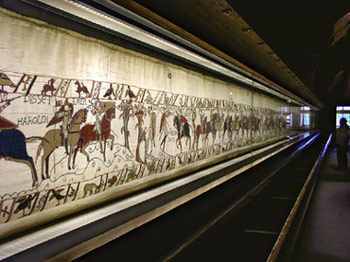
Why Bayeux?
It seems the link to the town that gives the tapestry its name is tenuous at best. In the 18th century the tapestry was found in a storeroom of Bayeux Cathedral. It was not highly prized and used to line an ammunitions wagon - and only saved from ruination when a lawyer offered is bed sheets as an alternative.
The Truth Embroidered.
The most famous panel is titled "King Harold – he is slain", apparently by an arrow in the eye. However even this is in doubt. Detailed copies by Bernard de Mountfacon in 1729, do not show an arrow, and later scientific studies indicate the arrow was not part of the original stitching. So why was it added?The likely explanation is that the French punishment for breaking a word of honour, was having an eye put out and so the arrow was added as a fitting comeuppance. [Harold swore allegiance to Edward the Confessor, that on Edward's death he would swear fielty to William as monarch, but he later renaged and made himself King.]
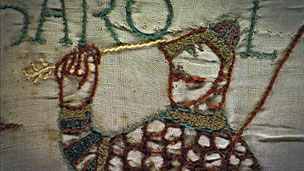
Bayeux's Revenge.
In 1816 Charles Stothard was commissioned by the London Society of Antiquities to make copies of the Bayeux Tapestry. When later, bits were found missing, Charles blamed his wife Anna for cutting pieces of to sell as souvenirs. Further investigation later proved that Charles had lied and he had vandalized the tapestry. However, his misdeeds had placed him under the Bayeux curse. Whilst Charles was painting a replica stained glass window in a church in Yelverton, Devon – he stepped back to admire his handiwork forgetting he was on a scaffold!
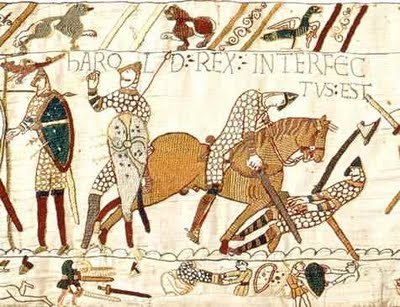
Published on April 24, 2011 12:25
April 20, 2011
Witch Hunts and Penicillin.

It's a fact, not widely acknowledged, that the witch hunts of the 16th and 17th centuries put the development of modern medicines back several hundred years.
So how can this be when witches had a reputation for evil, using black magic and charms to lay curses and do the devil's work?
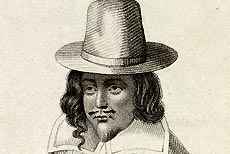 Matthew Hopkins, witch finder general, who made a fortune hunting witches. Well, it is now recognized that most of the misconceptions were spread by the very men that accused the witches such as the infamous witch finder General, Matthew Hopkins, in order to justify their persecution. Indeed 90% of those accused were widows without male protection, or came from the lower end of society, precisely because they were vulnerable and without the means and influence to fight back. Many of these 'witches' were healers, woman possessed of the traditional knowledge of the medicinal power of herbs and their 'spells' were the ability to make sick people well again. Again this information had been accrued by the poor, precisely because they couldn't afford a doctor.
Matthew Hopkins, witch finder general, who made a fortune hunting witches. Well, it is now recognized that most of the misconceptions were spread by the very men that accused the witches such as the infamous witch finder General, Matthew Hopkins, in order to justify their persecution. Indeed 90% of those accused were widows without male protection, or came from the lower end of society, precisely because they were vulnerable and without the means and influence to fight back. Many of these 'witches' were healers, woman possessed of the traditional knowledge of the medicinal power of herbs and their 'spells' were the ability to make sick people well again. Again this information had been accrued by the poor, precisely because they couldn't afford a doctor. 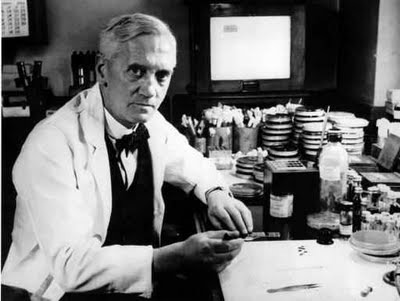 Alexander Fleming who isolated penicillin from mold in the 1920's. For instance the farm laborer in pain might be told to chew on willow bark, and the peasant with a more serious infection instructed to eat moldy bread. Indeed because their food was more likely to be moldy, some poor people survived diseases that the wealthy did not, calling even more suspicion down upon the healer.However when the skills of traditional healers became a dangerous to admit to, it was driven underground…and it took until the 20th century to rediscover the curative powers of the mold that is penicillin, and to isolate salicylic acid, or aspirin, from willow bark. ...
Alexander Fleming who isolated penicillin from mold in the 1920's. For instance the farm laborer in pain might be told to chew on willow bark, and the peasant with a more serious infection instructed to eat moldy bread. Indeed because their food was more likely to be moldy, some poor people survived diseases that the wealthy did not, calling even more suspicion down upon the healer.However when the skills of traditional healers became a dangerous to admit to, it was driven underground…and it took until the 20th century to rediscover the curative powers of the mold that is penicillin, and to isolate salicylic acid, or aspirin, from willow bark. ...
Published on April 20, 2011 07:52
April 17, 2011
More Smiles.
Published on April 17, 2011 11:21
'Familiar Felines.'
Following on from last weeks Halloween posting, today's blog post looks at the unwanted image of cats as the witches familiar - from the Norse Goddess Freya to lonely women in the middle ages.
The full Following on from last weeks Halloween posting, today's blog post looks at the unwanted image of cats as the witches familiar - from the Norse Goddess Freya to lonely women in the middle ages.
The full post can found at:
http://graceelliot-author.blogspot.com
...more
The full Following on from last weeks Halloween posting, today's blog post looks at the unwanted image of cats as the witches familiar - from the Norse Goddess Freya to lonely women in the middle ages.
The full post can found at:
http://graceelliot-author.blogspot.com
...more
- Grace Elliot's profile
- 156 followers








